Bringing Intelligence Home: A Comprehensive Guide to Home Automation and the Real Costs of AI Integration
Transitioning to a smart home system, integrating AI and automating everyday tasks, can indeed be a game-changer.
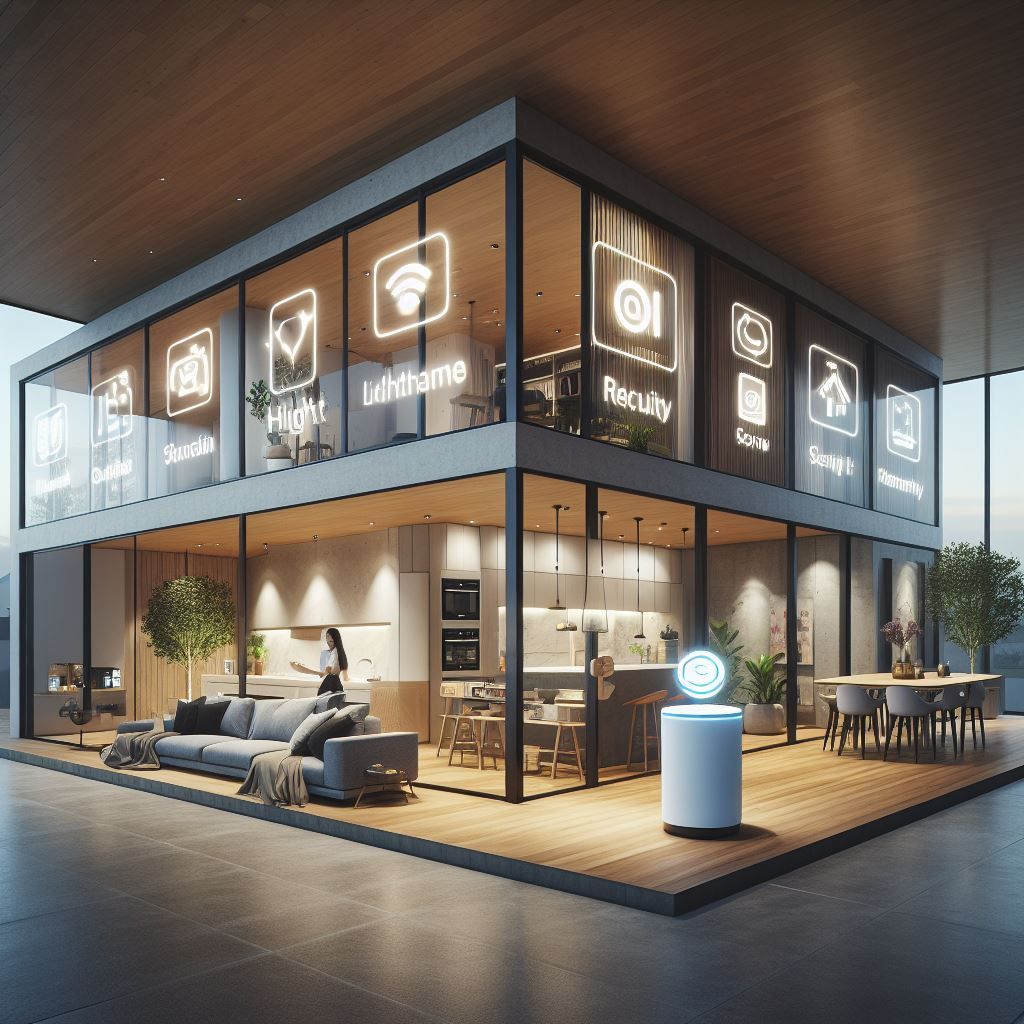
Table of Contents
- Introduction
- Understanding Home Automation
- Expanding the Understanding of Home Automation
- Detailed Cost Breakdowns: Real-World AI Integration Projects
- Factors Influencing AI Integration Costs
- A Closer Look at Smart Home Expenses
- Intelligent Living Solutions: A Cost-Benefit Analysis
- Home Automation Budgeting Tips
- Step-by-Step Guides for Budget Planning
- In-depth Analysis of Return on Investment (ROI)
- Evaluating Connected Home Technology Prices
- Cost-Effective Smart Home Upgrades
- Realistic AI Integration Expenses
- Smart Home System Investments: Are They Worth It?
- Conclusion
Key Takeaways
- Home automation is a system that allows for the control of home functions and appliances through a centralized network, offering convenience, improved efficiency, and increased home security.
- The cost of integrating AI in home automation can vary significantly based on several factors, including the complexity of the system, the type of technology used, the size of the home, and professional installation fees.
- The expenses associated with smart home technologies can be broken down into hardware costs, installation costs, and ongoing maintenance or subscription fees.
- Intelligent living solutions, while initially costly, can offer significant benefits in the long run, such as energy savings, enhanced security, and increased home value.
- With careful budgeting and prioritization, homeowners can manage the cost of transitioning to a smart home effectively.
- It's crucial to evaluate the prices of different connected home technologies by considering factors like quality, performance, compatibility, and customer support.
- Certain smart home upgrades, such as smart lighting and thermostats, can be particularly cost-effective due to their energy-saving features.
- The expenses for AI integration in home automation are an investment that can provide significant returns in terms of convenience, efficiency, and home value.
- Investing in smart home systems can be worthwhile, considering the long-term benefits they offer, notwithstanding the initial costs.
Introduction
Imagine walking into your home after a long day at work - the lights automatically adjust to a comforting glow, your favorite music starts playing, and your thermostat is already set to your preferred temperature. This isn't a scene from a science fiction movie; it's the reality of a smart home powered by home automation and Artificial Intelligence (AI).
Home automation is revolutionizing the way we interact with our living spaces, bringing about a new level of comfort and convenience. But while the benefits are undeniable, understanding the real costs of home automation and AI integration is crucial for anyone considering this significant shift.
Costs can vary widely, influenced by factors such as the complexity of the system, the size of the home, and whether professional installation is required. Additionally, there are ongoing maintenance or subscription fees to consider. This article aims to provide a comprehensive guide to these costs, helping you make informed decisions about integrating AI into your home.
Are you ready to dive into the world of home automation? Let's explore the real costs and benefits of making your home smarter. The future of living is here, and it's more accessible than you might think.

Understanding Home Automation
Home automation is a technology-enabled system that automates and controls household features, activities, and appliances. From lighting and heating to security systems and even kitchen appliances, home automation allows these elements to be controlled remotely using a smartphone or other networked device.
The heart of a home automation system is a central hub or controller. This hub connects to the home's Wi-Fi network and serves as the main point of communication between you and your smart devices. Using a smartphone app or a web interface, you can send commands to the hub, which then communicates with your smart devices to perform specific tasks like adjusting the thermostat or turning off lights.
The benefits of home automation are manifold. Convenience is a significant advantage. Imagine being able to check whether you left the oven on while you're away from home, or having your coffee ready when you wake up. Efficiency is another key benefit. With smart thermostats, for instance, you can program your heating and cooling system to use less energy while you're out, saving on utility bills.
Home automation also enhances security. Smart security systems can alert you to unusual activity, allow you to monitor your home in real-time, and even remotely lock and unlock doors. Lastly, home automation can increase the value of your home, making it a worthwhile investment for future resale.
It's important to note that while home automation can transform your living space into a comfortable, secure, and efficient environment, it requires a good understanding of the technology involved and careful planning. This includes understanding the cost implications, which we'll explore in the following sections, to ensure you're making a wise and informed investment.
Expanding the Understanding of Home Automation: Diverse Applications in Your Home
In the Kitchen:
The heart of the home, your kitchen, can transform into a hub of convenience and efficiency with smart appliances. Imagine a refrigerator that alerts you when you're running low on essentials, a smart oven that preheats on your commute home, or a coffee maker programmed to have your morning brew ready when you wake up. Integrating AI with these appliances can lead to a seamless cooking experience, managing grocery lists, suggesting recipes based on available ingredients, and even reducing energy consumption by optimizing appliance use.
In the Bedroom:
Enhance comfort and relaxation in your bedroom with smart climate control, lighting, and window treatments. A smart mattress can monitor your sleep patterns and adjust firmness accordingly, while smart thermostats adjust the room temperature for optimal sleep conditions. Voice-activated controls can dim the lights, close the blinds, or even play soothing sounds to help you sleep, all contributing to a restful night's sleep.
In the Garden:
Smart home technology extends beyond your home's interior to the garden. Intelligent irrigation systems can adjust watering schedules based on weather forecasts, soil moisture levels, and plant types, conserving water and saving on utility bills. Smart outdoor lighting can enhance security and aesthetics, turning on automatically at sunset or when motion is detected.
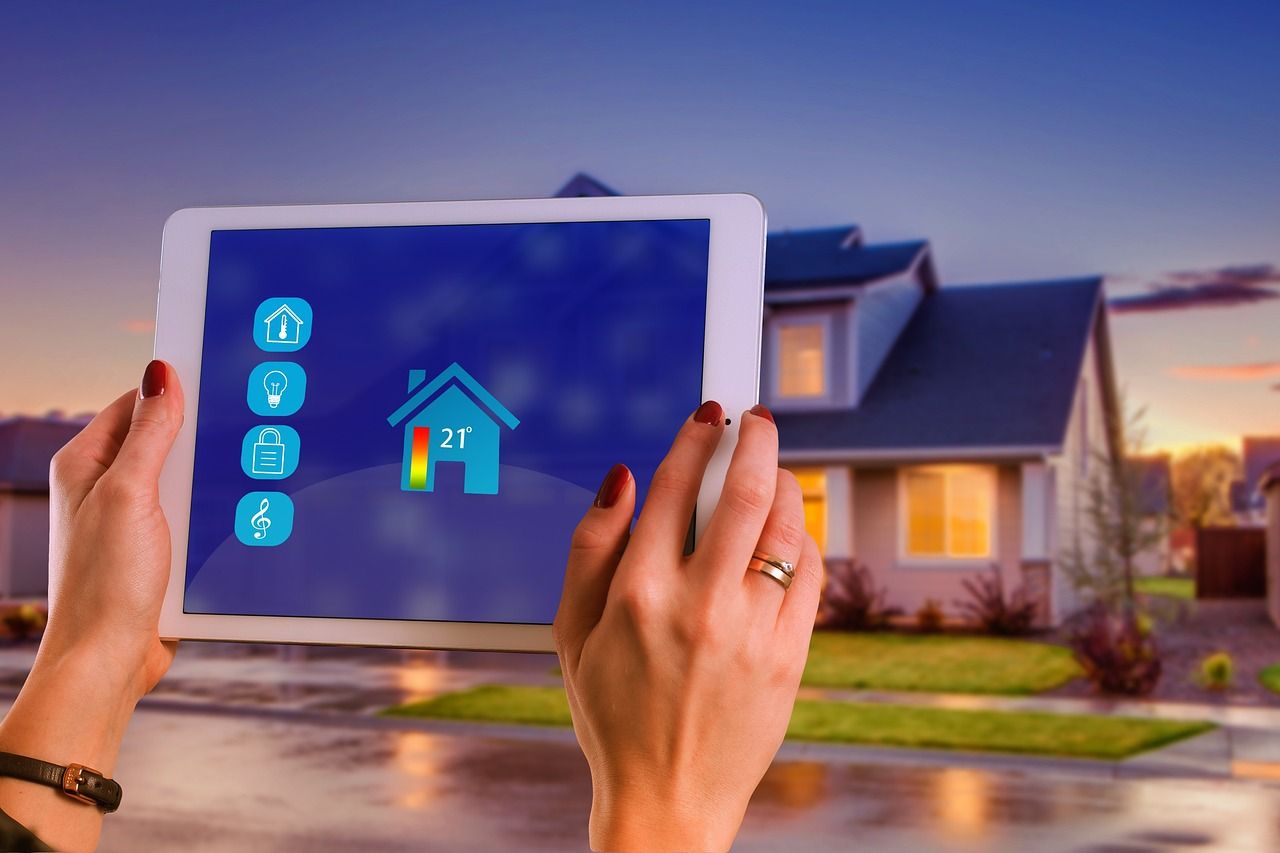
Detailed Cost Breakdowns: Real-World AI Integration Projects
Project 1: Smart Kitchen Upgrade
• Smart Refrigerator: $2,000 - $3,500, featuring inventory tracking, and recipe suggestions.
• Smart Oven: $1,200 - $2,500, with remote preheat and cooking monitoring capabilities.
• Smart Coffee Maker: $100 - $250, programmable via smartphone app.
• Installation & Setup: $150 - $300, depending on the complexity and integration with existing systems.
• Total Estimated Cost: $3,450 - $6,550, not including potential subscription services for recipe databases or maintenance plans.
Project 2: Bedroom Comfort Optimization
• Smart Mattress: $1,000 - $2,000, with sleep tracking and temperature regulation.
• Smart Thermostat: $200 - $250, for precise temperature control.
• Smart Lighting Kit: $100 - $200, including dimmable and color-changing options.
• Smart Blinds: $300 - $500 per window, with automatic opening and closing.
• Installation & Setup: $100 - $200, primarily for the thermostat and lighting.
• Total Estimated Cost: $1,700 - $3,150, enhancing sleep quality and comfort.
Project 3: Intelligent Garden Management
• Smart Irrigation System: $150 - $300, customizable watering schedules.
• Smart Outdoor Lighting: $200 - $500, including motion sensors and automatic scheduling.
• Installation & Setup: $100 - $200, especially for systems requiring extensive wiring.
• Total Estimated Cost: $450 - $1,000, improving water efficiency and outdoor security.
Factors Influencing AI Integration Costs
The cost of integrating AI in home automation systems can vary greatly, influenced by several key factors.
1. Complexity of the System: The level of sophistication and automation desired will significantly affect the cost. A basic system controlling lights and thermostats will be less costly compared to an advanced system that integrates security, appliances, and complex scenes or routines.
2. Type of Technology: The choice of technology plays a significant role in the overall cost. Proprietary systems may be more expensive compared to open-source alternatives. Furthermore, opting for cutting-edge technologies, like AI-powered voice assistants or facial recognition, can add to the cost.
3. Size of the Home: The size of the house is directly proportional to the cost. Larger homes require more devices to cover all areas, increasing the overall cost.
4. Professional Installation: While DIY installation can save money, professional installation ensures optimal performance and can avoid potential issues down the line. This service, however, adds to the overall cost.
5. Ongoing Costs: Besides the initial setup, there are ongoing costs to consider. These may include subscription fees for cloud services, regular maintenance, and potential upgrades or replacements.
6. Quality of Devices: High-quality devices often come with a higher price tag. However, investing in reliable, well-reviewed devices can save money in the long run by reducing the need for replacements or repairs.
By understanding these factors, homeowners can make informed decisions and budget appropriately for their smart home transformation.
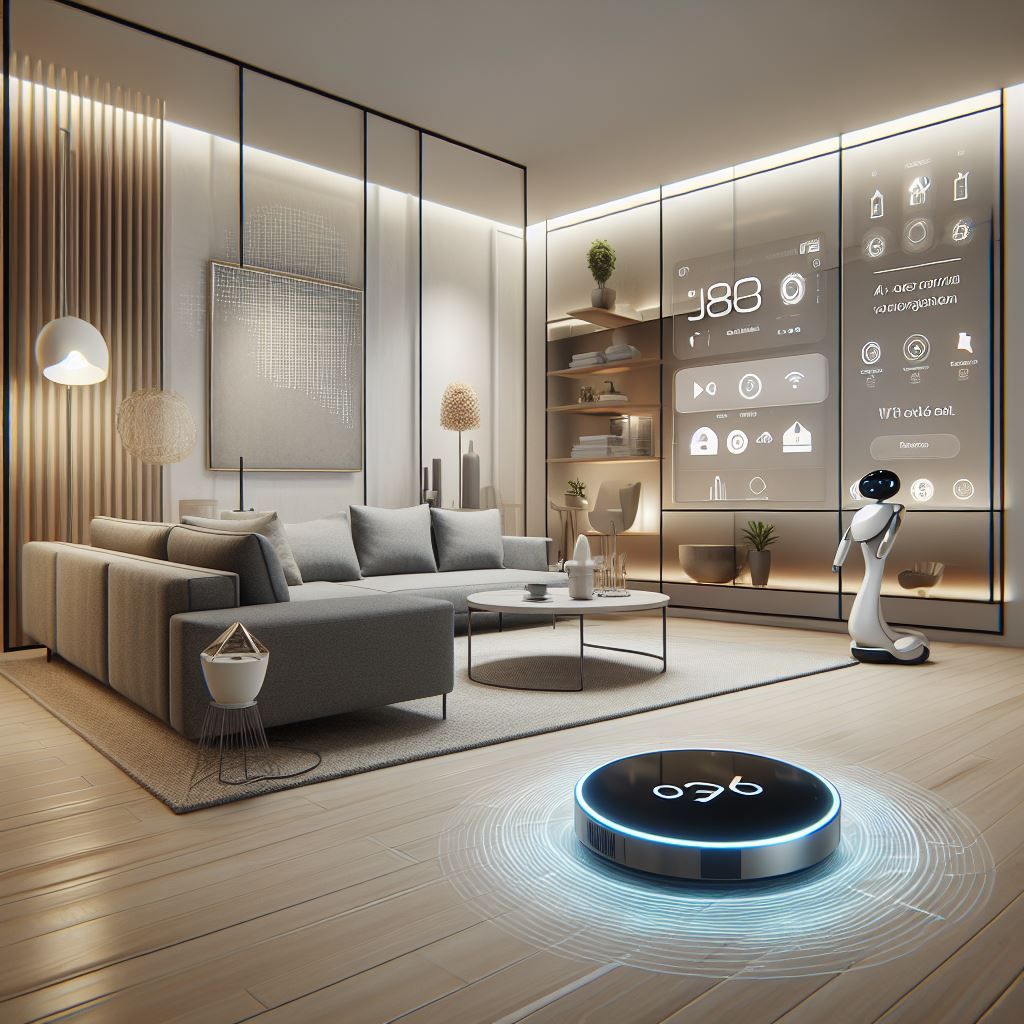
A Closer Look at Smart Home Expenses
Smart home technology costs can vary widely depending on the devices and systems chosen. Here's a breakdown of typical expenses associated with some common smart home technologies.
1. Smart Speakers: These form the basis of many smart homes, with popular options like Amazon Echo and Google Home priced around $30-$100. Higher-end models with superior sound quality or screens can cost up to $300.
2. Smart Lighting: A smart bulb can cost anywhere from $15-$50. If you choose to install smart switches instead, they typically range from $40-$100 each, excluding installation costs.
3. Smart Thermostats: These energy-saving devices are usually priced between $100-$250. Professional installation, if required, can add an additional $100-$200.
4. Smart Security Systems: Basic security cameras can start around $20-$100, while more advanced systems with multiple cameras and features like motion detection or facial recognition can cost several hundred dollars. Additionally, security systems often come with monthly subscription fees for cloud storage and extra features, typically around $10-$30 per month.
5. Home Automation Hubs: These central control points for your smart devices range from $50-$150.
6. Professional Installation: If you opt for professional installation, costs can vary significantly depending on the complexity of the system, but a typical range is $100-$200 per device.
Remember, these are rough estimates. Prices can vary based on brand, specific features, and the region you live in. It's also important to factor in potential energy savings over time, particularly with devices like smart thermostats or energy-efficient smart bulbs.
Intelligent Living Solutions: A Cost-Benefit Analysis
With the advent of intelligent living solutions, balancing the initial costs with long-term benefits is crucial. Here's an analysis of some popular smart home technologies.
1. Smart Thermostats: While the upfront cost of a smart thermostat (around $100-$250) may seem steep, the energy savings they provide can offset this. For example, the Nest Learning Thermostat claims to save users 10-12% on heating and 15% on cooling, potentially recouping its cost in less than two years.
2. Smart Lighting: Smart bulbs and switches, ranging from $15-$100, offer the convenience of remote access, scheduling, and even integration with your home's security system. Moreover, most smart bulbs are LED, which use less energy and last longer than traditional bulbs, leading to substantial savings over time.
3. Smart Security Systems: The initial setup for these systems can be costly (ranging from $100 to several hundred dollars), plus potential monthly subscription fees. However, the peace of mind they offer by alerting homeowners about potential threats is invaluable. Additionally, some insurance companies offer discounts on policies for homes with security systems.
4. Smart Speakers: These devices range from $30-$300. Beyond their entertainment value, they often serve as a hub for controlling other smart home devices, adding to their cost-effectiveness.
In conclusion, while the upfront costs of intelligent living solutions can be significant, the long-term benefits – including energy savings, enhanced security, increased home value, and improved quality of life – can make them a worthwhile investment.
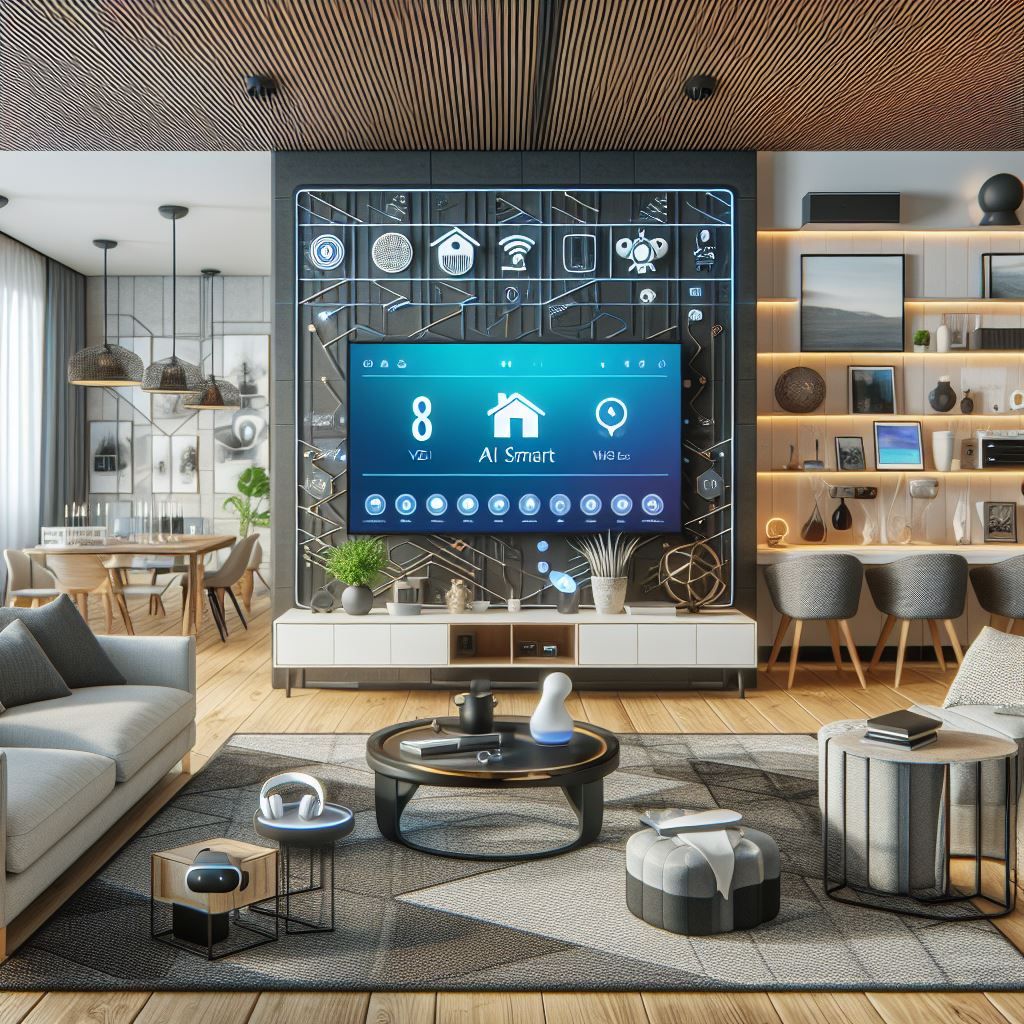
Home Automation Budgeting Tips
Implementing home automation can seem like a daunting financial task, but with careful planning and savvy shopping, it can be more affordable. Here are some tips for budgeting for your smart home:
1. Prioritize: Identify what's most important to you. Is it security, energy efficiency, convenience, or all of the above? Start with the necessities and then expand as your budget allows.
2. DIY Installation: Many smart home devices are designed for easy installation and come with detailed guides. Doing it yourself can save on professional installation costs.
3. Compare Prices: Shop around and compare prices from different retailers. Look out for sales and discounts, especially during major sales events like Black Friday or Cyber Monday.
4. Start Small: You don't need to automate your whole home at once. Starting with one device like a smart speaker or smart thermostat can provide a good introduction without a huge initial cost.
5. Choose Open Systems: Opt for devices that work with a variety of brands and platforms. This gives you the flexibility to choose devices based on price and functionality, rather than being locked into one expensive ecosystem.
6. Consider Energy Savings: Devices like smart thermostats and lighting can lead to significant energy savings over time, which can offset their initial cost.
7. Plan for the Future: Technology evolves quickly. Consider potential upgrade costs and choose devices that are likely to stay compatible with future technologies.
Remember, home automation is a long-term investment. It's worth spending a bit more upfront for a system that will serve you well in the years to come.
Comparison Tables for Smart Home Technologies
Smart Thermostats
| Brand/Model | Cost | Key Features | Compatibility | Consumer Reviews |
|---|---|---|---|---|
| Nest Learning | $249 | Learns your schedule, Energy History | Works with Alexa, Google Assistant | 4.8/5 |
| Ecobee SmartThermostat | $249 | SmartSensor included, Alexa Built-in | Works with Alexa, Apple HomeKit, Google Assistant, SmartThings | 4.6/5 |
| Honeywell Home T9 | $169 | Multi-room focus, Smart Response Technology | Works with Alexa, Google Assistant | 4.4/5 |
Smart Lighting Systems
| Brand/Model | Cost | Key Features | Compatibility | Consumer Reviews |
|---|---|---|---|---|
| Philips Hue Starter Kit | $199 | Easy setup, 16 million colors, Schedules | Works with Alexa, Apple HomeKit, Google Assistant | 4.7/5 |
| LIFX A19 LED Light | $59.99 | No hub required, 16 million colors, Dimmable | Works with Alexa, Apple HomeKit, Google Assistant | 4.5/5 |
| Sengled Smart LED Starter Kit | $119.99 | Energy monitoring, Multicolor, Schedules | Works with Alexa, Google Assistant | 4.3/5 |
Step-by-Step Guides for Budget Planning
Step 1: Define Your Goals Identify what you want to achieve with home automation. Prioritize needs over wants to focus your budget on technologies that offer the most value to you.
Step 2: Research and Compare Prices Utilize comparison tables to find the best products that fit your goals and budget. Pay attention to ongoing costs such as subscriptions.
Step 3: Set a Preliminary Budget Based on your research, set a realistic budget for each priority area. Include a buffer for unexpected expenses.
Step 4: Look for Deals and Rebates Check for sales, use cashback offers, or look for rebates on energy-efficient products to save money.
Step 5: DIY vs. Professional Installation Decide which projects you can do yourself and which might require professional help. Factor these costs into your budget.
Step 6: Implement in Phases Consider implementing your project in phases to spread out costs. Start with upgrades that offer the most immediate return on investment.
Step 7: Track Spending Keep track of all expenses to ensure you stay within budget. Adjust as needed if you find more cost-effective solutions.
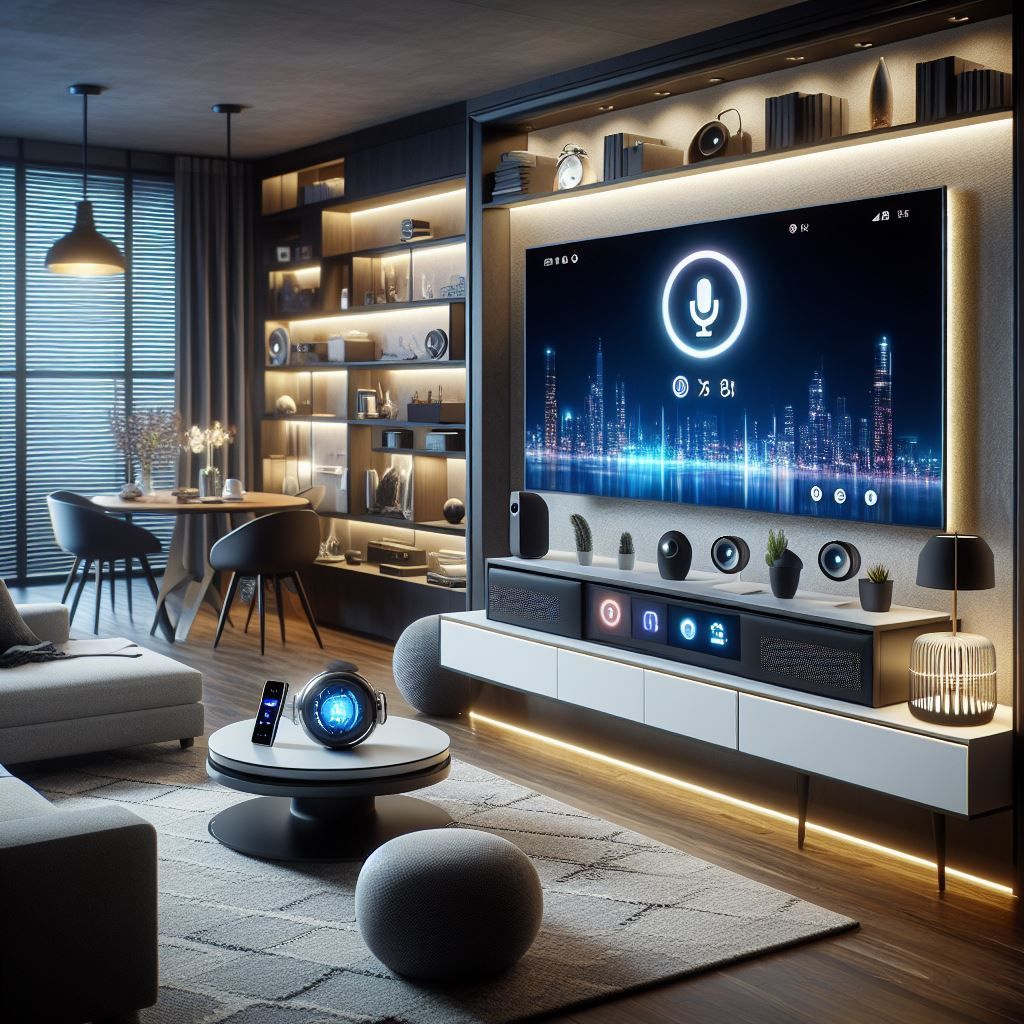
In-depth Analysis of Return on Investment (ROI)
Energy Savings Smart thermostats, such as the Nest Learning or Ecobee SmartThermostat, can save up to 23% on heating and cooling costs annually. Lighting systems like Philips Hue can also contribute to savings through efficient LED technology and usage schedules.
Property Value Increase Smart home upgrades can increase property value by 3-5%. The appeal of ready-to-use smart technology makes homes more attractive to tech-savvy buyers.
Insurance Discounts Many insurance companies offer discounts of 5-20% for homes equipped with smart security systems, smoke detectors, and water sensors, recognizing the reduced risk of claims.
Long-Term Savings Example Investing $2,000 in smart home technology can result in:
• Annual energy savings: ~$200
• Increased property value: Up to $10,000 for a $200,000 home
• Insurance discounts: Up to $200 annually on a $1,000 premium
Over five years, the ROI can significantly outweigh the initial investment, not to mention the added convenience and security benefits.
Evaluating Connected Home Technology Prices
When evaluating the prices of connected home technologies, it's important to consider several factors, not just the upfront costs. Here's a guide to help you make an informed decision.
1. Compatibility: Ensure the device is compatible with your existing smart home ecosystem. If not, you may need additional devices or hubs, adding to the cost.
2. Functionality: Higher-priced devices often offer more features. Evaluate if these extra features are worth the added cost based on your needs.
3. Installation Costs: Some devices require professional installation, which can significantly increase the overall cost. Consider DIY-friendly devices to save on these costs.
4. Energy Efficiency: Energy-saving devices like smart thermostats or bulbs may have higher upfront costs but can save money in the long run by reducing energy bills.
5. Maintenance & Subscription Fees: Some devices require ongoing maintenance or come with optional subscription services for additional features. These recurring costs can add up over time.
6. Brand Reputation: While less-known brands may offer lower prices, established brands often provide better customer support and have a proven reliability record.
7. Future-Proofing: Technology evolves rapidly. Picking a device that's likely to stay compatible with future developments can save you replacement costs down the line.
Remember, the cheapest option isn't always the best. Consider all these factors to ensure you get the best value for your money.
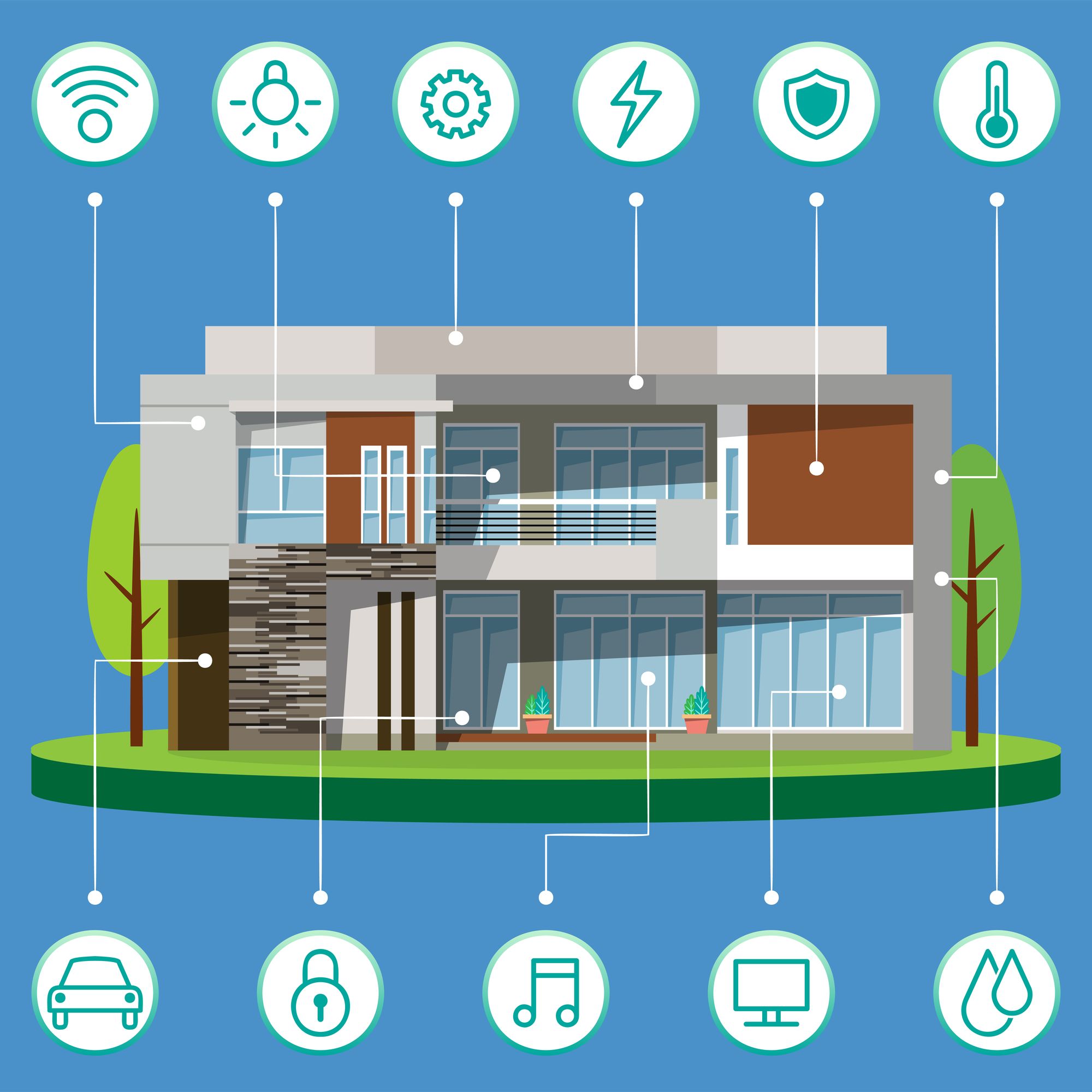
Cost-Effective Smart Home Upgrades
Transitioning to a smart home doesn't have to break the bank. Here are cost-effective upgrades to consider:
1. Smart Plugs: These affordable devices, typically under $30, can automate almost any electronic appliance, from lamps to coffee makers, and monitor their energy usage.
2. Smart Bulbs: While more expensive than traditional bulbs, smart bulbs offer longevity and energy efficiency. They can be timed, dimmed, and even change colors, enhancing home ambiance and saving energy.
3. Smart Thermostats: A smart thermostat helps manage heating and cooling more efficiently, potentially saving up to 10-20% on energy bills. While upfront costs can be around $100-$250, the savings add up over time.
4. Smart Doorbells: While some models can be pricey, there are budget-friendly options under $100. They enhance home security by providing video footage of visitors and can deter potential intruders.
5. Smart Speaker: An entry-level smart speaker, such as Amazon Echo Dot or Google Home Mini, can cost as low as $30-$50. These can control other smart devices, stream music, and answer queries.
6. Energy Monitoring Devices: These devices, costing between $20-$100, can monitor your home's energy consumption, helping you identify energy-wasting appliances.
7. Smart Smoke Detectors: Priced around $100, these devices offer enhanced safety by alerting your phone about potential hazards.
Remember, the best smart home upgrades are those that provide significant value, either in cost savings, convenience, or safety. Start small, and gradually expand your smart home ecosystem as your budget allows.
Realistic AI Integration Expenses
When considering AI integration into home automation systems, it's important to take a realistic look at the associated expenses. These costs can be divided into several categories: initial investment, installation, maintenance, and potential upgrades.
1. Initial Investment: AI-enabled devices often carry a higher price tag due to their advanced capabilities. For example, smart speakers with AI like Amazon's Echo or Google Home range from $30 to $200, while AI-powered security cameras can cost anywhere from $100 to $300. More specialized AI devices, such as robotic vacuums, can cost upwards of $500.
2. Installation: While many AI devices are designed for easy, DIY installation, some may require professional installation, especially if they need to be integrated with existing systems. For instance, a smart thermostat may need professional installation if your home's wiring is complex, costing an additional $50 to $200.
3. Maintenance: Regular software updates are crucial for AI devices to ensure they're benefiting from the latest features and security patches. While these are generally free, they require a reliable internet connection, which is a cost to consider. Some AI devices may also require subscription services for full functionality, like certain security cameras or smart doorbells that charge for access to video history, typically around $3 to $10 a month.
4. Future Upgrades: AI technology is evolving rapidly, and while many manufacturers strive to provide updates to keep their devices current, there may come a point where hardware limitations necessitate an upgrade. This could mean replacing devices every few years, so it's an important cost to factor into your budget.
5. Energy Costs: While many AI devices use minimal power, it's worth considering their impact on your energy bill, especially for devices that are always on, like smart speakers or security cameras.
6. Data Privacy: Though not a direct monetary cost, the potential risk to data privacy with AI devices is a factor to consider. Ensuring robust security measures can involve additional investment in secure routers or subscription to security services.
While integrating AI into your home automation can come with significant costs, it's also important to consider the convenience, efficiency, and peace of mind these systems can provide, which for many homeowners, makes the investment worthwhile.
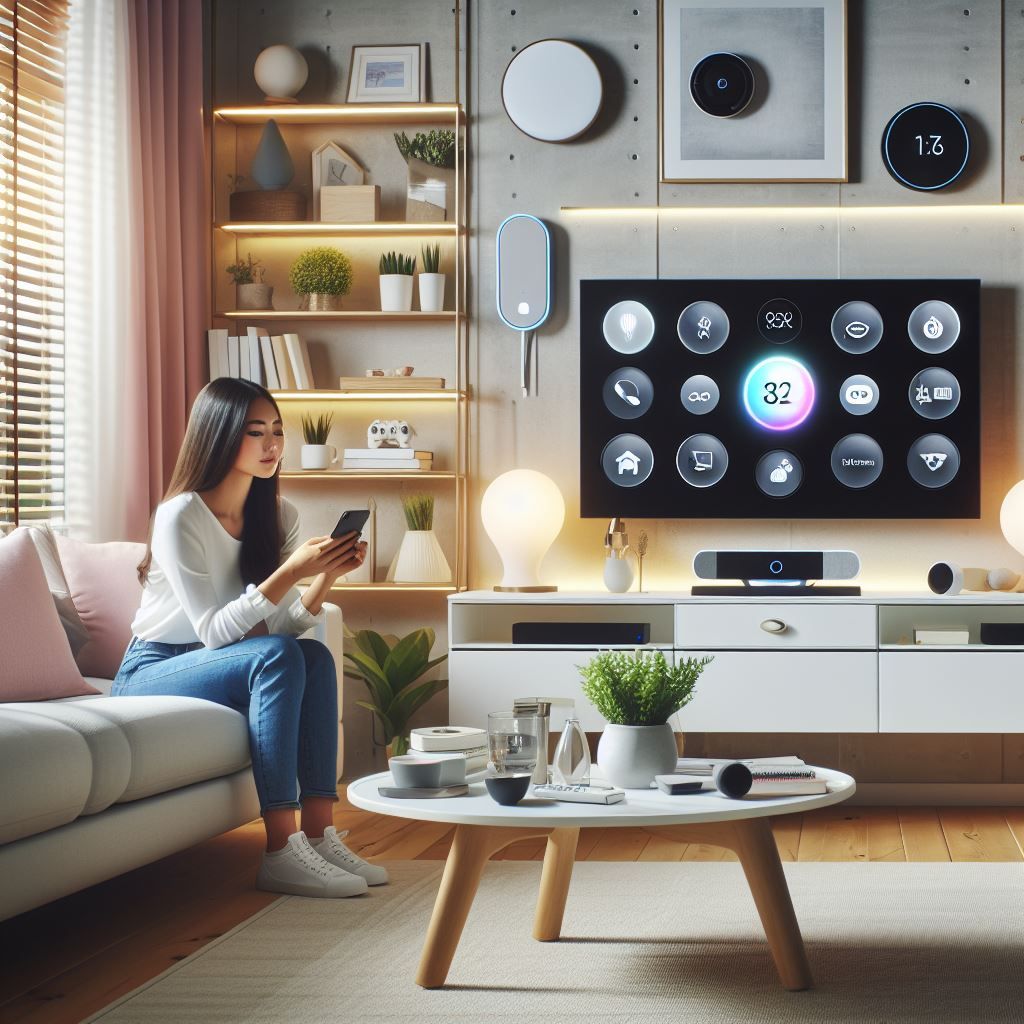
Smart Home System Investments: Are They Worth It?
Investing in a smart home system can be a significant financial commitment. However, it's essential to consider not just the upfront costs but also the potential long-term benefits and return on investment.
1. Energy Savings: Smart home devices such as smart thermostats, lighting, and plugs can considerably reduce energy consumption, leading to lower utility bills. The U.S. Environmental Protection Agency reports that smart thermostats can save an average of $180 per year on heating and cooling. Over time, these savings can offset the upfront costs of these devices.
2. Increased Home Value: A study from the National Association of Home Builders found that nearly half of all home buyers are willing to pay extra for homes with smart technology installed. This could mean a higher resale value, making your smart home investment worthwhile.
3. Insurance Discounts: Some insurance companies offer discounts for homes equipped with smart security systems. These discounts can amount to a significant annual savings, offsetting the cost of these systems.
4. Convenience and Efficiency: While not directly monetary, the convenience and efficiency provided by smart home systems add value to your everyday life. Automated tasks, remote access to home functions, and personalized settings can save time and make home management easier.
5. Preventive Maintenance: Devices like smart leak detectors and smoke alarms can alert you to issues before they become costly problems, potentially saving you from expensive repairs.
6. Future-Proofing: Investing in a smart home system now can prepare your home for future technological advancements, ensuring you stay current and retain the value of your home.
While the initial costs can be substantial, the long-term return on investment can make smart home systems a worthwhile investment. However, it's important to choose devices that suit your specific needs and circumstances to get the most value out of your investment.
Conclusion
Transitioning to a smart home system, integrating AI and automating everyday tasks, can indeed be a game-changer. It can enhance convenience, increase energy efficiency, and boost the value of your home. However, understanding the financial implications associated with these upgrades is paramount. From the initial investment, installation, and maintenance costs, to the potential costs of future upgrades, home automation and AI integration demand careful financial planning.
The key to a successful transition lies in balancing one's needs, budget, and the potential long-term return on investment. Energy savings, increased home value, potential insurance discounts, and preventive maintenance savings can significantly offset the initial costs. Yet, smart home upgrades should also be seen as an investment in lifestyle enhancement and future-proofing your home.
SimpleDirect Financing: A Solution for Homeowners
For homeowners considering this transition but worried about the upfront costs, SimpleDirect offers a feasible solution. SimpleDirect provides financing options tailored for smart home upgrades, helping homeowners manage the initial investment without compromising on their needs or financial comfort.
With SimpleDirect, homeowners can invest in comprehensive home automation systems, integrating AI seamlessly into their everyday lives. The financing options allow for spreading the cost over a manageable period, making the transition to a smart home financially comfortable. Furthermore, SimpleDirect's customer-centric approach ensures homeowners understand their financing plan, aligning it with their specific needs and financial circumstances.
In conclusion, integrating smart home systems and AI into your home is an investment that can pay dividends in the long run. It holds the potential to significantly enhance your quality of life, increase your home's value, and generate substantial savings. With SimpleDirect financing, this transition becomes even more accessible, making the smart home dream a reality for many homeowners.
Reference
1. "Programmable Thermostats." U.S. Environmental Protection Agency. [https://www.energystar.gov/products/heating_cooling/programmable_thermostats](https://www.energystar.gov/products/heating_cooling/programmable_thermostats)
2. "What Home Buyers Really Want (2019 Edition)." National Association of Home Builders. [http://eyeonhousing.org/wp-content/uploads/2019/03/What-Home-Buyers-Really-Want-2019.pdf](http://eyeonhousing.org/wp-content/uploads/2019/03/What-Home-Buyers-Really-Want-2019.pdf)
3. "Home Insurance Discounts." Insurance Information Institute. [https://www.iii.org/article/how-to-save-money-on-your-homeowners-insurance](https://www.iii.org/article/how-to-save-money-on-your-homeowners-insurance)
4. "Financing Options." SimpleDirect. [https://simpledirect.com/financing](https://simpledirect.com/financing)
For further insights into smart home system investments, these resources provide credible information. These references support the facts presented and offer additional reading for those interested in exploring the topic further.
